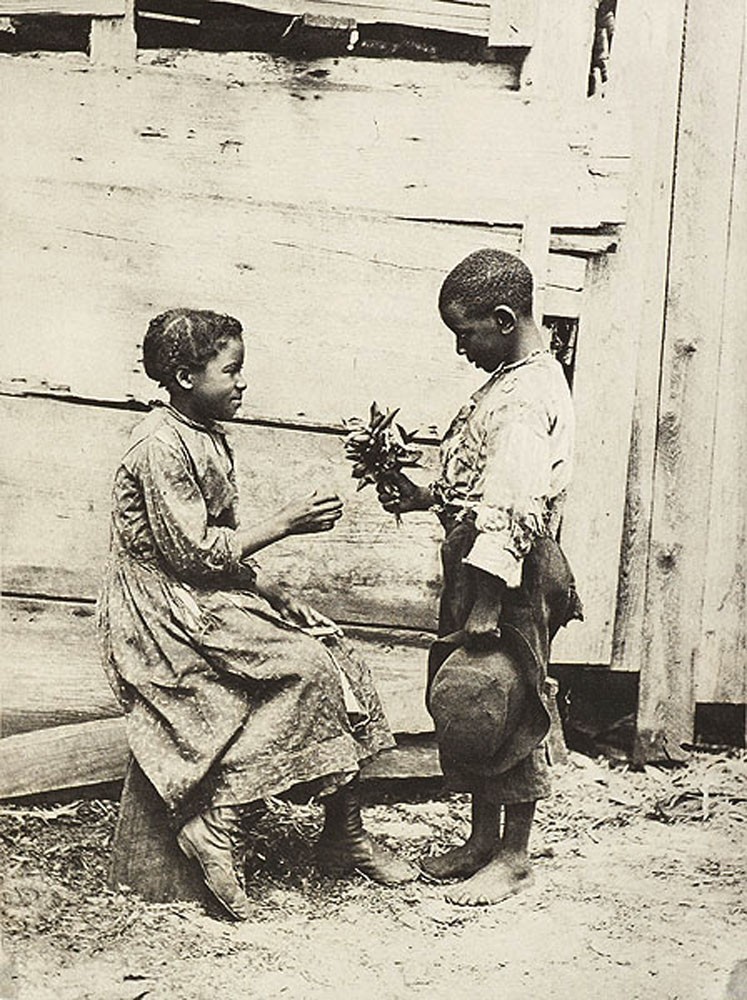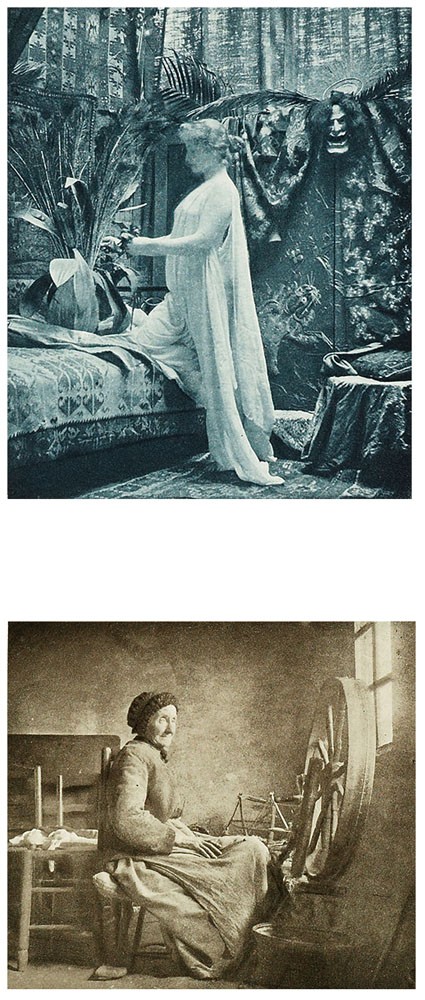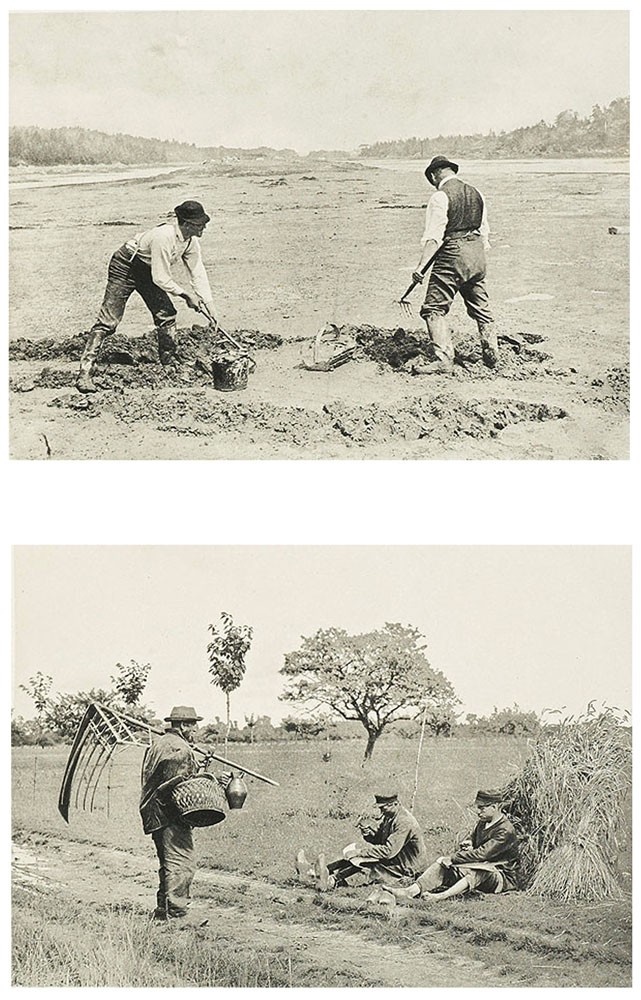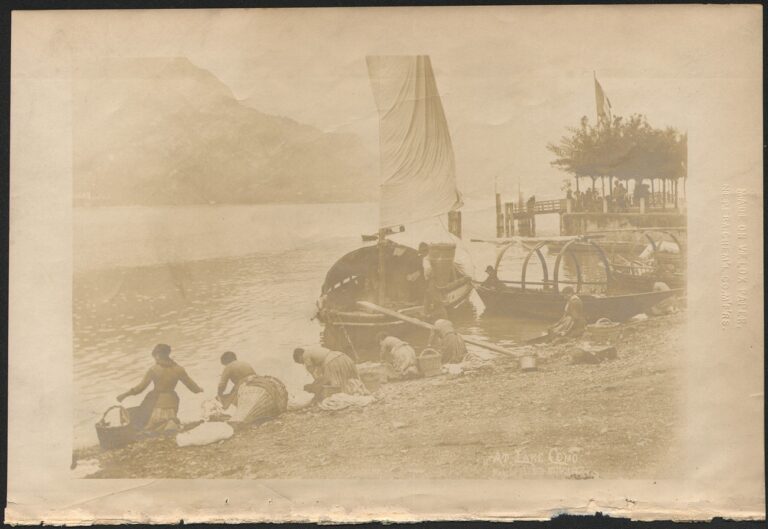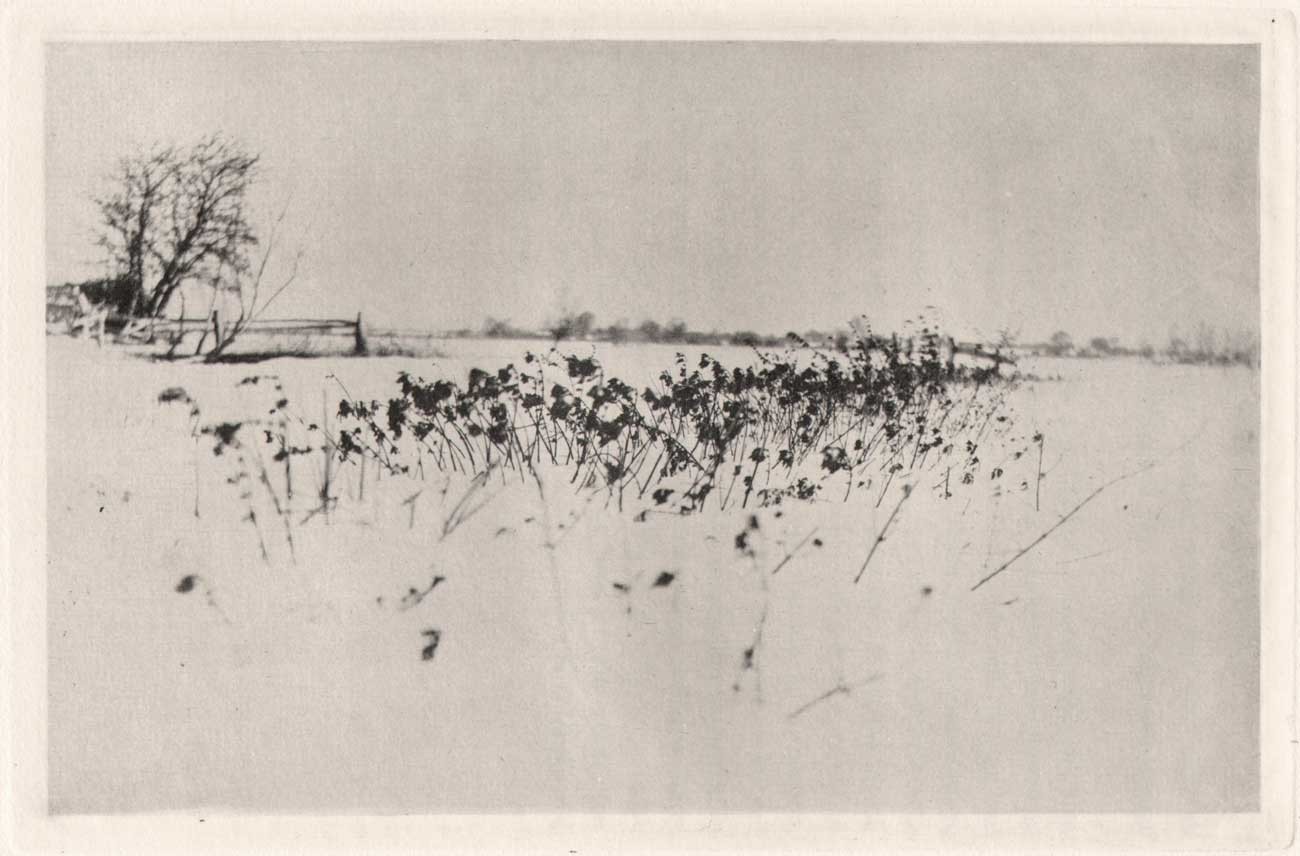
The Snow Garden
The Snow Garden, reproduced as a hand-pulled photogravure plate etched and printed by Emerson, (1856-1936) is perhaps one of the better known East Anglian images from his final volume Marsh Leaves published by David Nutt in London in 1895. The work was photographed while he was living at Claringbold in Broadstairs, a coastal town located in Kent in southeast England. The following review of Marsh Leaves appeared in The Studio: An Illustrated Magazine of Fine and Applied Art, in 1896:
Marsh Leaves. By P.H. Emerson, with sixteen photo-etchings from plates taken by the author. (London: David Nutt.)-The distinguished writer of “Naturalistic Photography” has long since been acclaimed by those cultured in pictorial art as one whose productions, albeit they come from a camera, are instinct with a larger proportion of graphic quality and suggestion than is usually associated with a photograph. The photo-etchings in Marsh Leaves will go far to widen the existing gulf which yawns between the crowds who depict too much of everything with harrowing insistence, and the few, such as Dr. Emerson, who impose upon their records an impressive reticence. The author has kindly allowed us to reproduce in “half-tone ” two of the illustrations to this book. (1.)
Uneven, but Interesting
Another contemporary review of Marsh Leaves, in the weekly British Journal of Photography, is instructive today for how readers may have entertained prospects of purchasing the volume. In this regard, the writer, under the Latin heading EX CATHEDRA, (with authority) seems more interested in dissecting Emerson’s prose abilities than his photographic efforts. Unfortunately, his so called “authority” seems also to have been tripped up by the term “photo-etchings”. Here the reviewer states “possibly photogravures” for the method employed by Emerson in the reproduction method of the 16 individually hinged plates which appeared in the limited edition volume. The reviewer then goes on with his appraisal that some of the photographs, including the now iconic Emerson masterpiece The Lone Lagoon are “an example of some of the illustrations that might, on account of their unintelligibility, have been omitted;”. The review follows:
EX CATHEDRA.
Dr. P.H. Emerson’s last book, Marsh Leaves (London: David Nutt) is a beautiful production as books go, but in some essentials it is disappointing. It may best be described as a series of word vignettes of nature and character in the East Anglian fens. Here and there the author’s prose paintings are so realistic that we seem to breathe the very air of the scenes he describes. Notably is this so of the chapters headed “A Moonlight Midnight,” “First Voice of Spring,” “Return of Spring,” and “A Nocturne,” which attest both Dr. Emerson’s accuracy and minuteness of observation, and his skill in delineating the smallest details of his subjects.
Humour, pathos, and human sympathy distinguish the chapters in which the author deals with character as found in fenmen, wherrymen, and marshmen. Dismissing several chapters in which the scenes and incidents handled are either commonplace or inconsequential, it struck us that, were Emerson to devote himself to fiction, he would find congenial work in doing for East Anglia what Blackmore has done for Devonshire and Cornwall, and what Thomas Hardy has done for Wilts and Dorset, that is, to make the country, with its customs, manners, dialect, and character, the background of a series of fine novels. His obvious powers, in combination with the years of patient observation he has expended, mark him out for such an undertaking.
There are “sixteen photo-etchings from plates taken by the author” to illustrate “Marsh Leaves,” possibly photogravures, but looking not unlike collotypes on plate paper. The frontispiece is “A Winter’s Sunrise,” an enlargement of which, we believe, was shown at the last Exhibition of the Royal Photographic Society. We may instance the “Lone Lagoon,” which shows two little bits of tree-topped shore surrounded by a monotonous area of faintly inked paper, as an example of some of the illustrations that might, on account of their unintelligibility, have been omitted ; on the other hand, “ A Winter Pastoral ” and “ Bleak Winter,” two snowy landscapes with gaunt trees, the atmosphere of winter brooding over scenes of dreariness, are in the author’s best manner. “ Marsh Leaves” is an uneven but an interesting book. (2.)
1. Reviews of Recent Publications: in: The Studio: An Illustrated Magazine of Fine and Applied Art: Vol. 7: London, 1896: p. 54
2. review: Marsh Leaves: in: The British Journal of Photography: London: published by Henry Greenwood & Co.: January 10, 1896: p. 17
